
A hospital ship is a ship designated for primary function as a floating medical treatment facility or hospital. Most are operated by the military forces of various countries, as they are intended to be used in or near war zones. In the 19th century, redundant warships were used as moored hospitals for seamen.
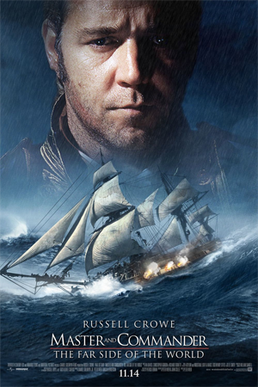
Master and Commander: The Far Side of the World is a 2003 American epic period war-drama film co-written, produced and directed by Peter Weir, set during the Napoleonic Wars. The film's plot and characters are adapted from three novels in author Patrick O'Brian's Aubrey–Maturin series, which includes 20 completed novels of Jack Aubrey's naval career. The film stars Russell Crowe as Aubrey, captain in the Royal Navy, and Paul Bettany as Dr. Stephen Maturin, the ship's surgeon. This is the second onscreen collaboration for Crowe and Bettany, both of whom previously co-starred in 2001’s A Beautiful Mind.

The Mauritius Command is the fourth naval historical novel in the Aubrey-Maturin series by Patrick O'Brian, first published in 1977.
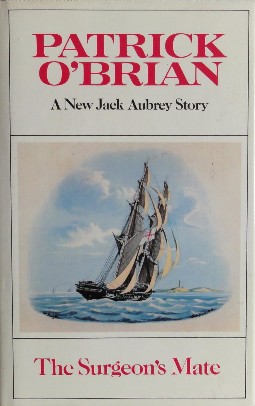
The Surgeon's Mate is the seventh historical novel in the Aubrey–Maturin series written by Patrick O'Brian, first published in 1980. The story is set during the War of 1812 and the Napoleonic Wars.

The Fortune of War is the sixth historical novel in the Aubrey-Maturin series by British author Patrick O'Brian, first published in 1979. It is set during the War of 1812.

The Far Side of the World is the tenth historical novel in the Aubrey-Maturin series by Patrick O'Brian, first published in 1984. The story is set during the Napoleonic Wars and the War of 1812.
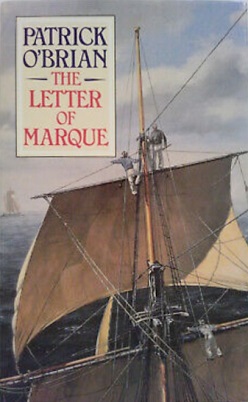
The Letter of Marque is the twelfth historical novel in the Aubrey–Maturin series by Patrick O'Brian, first published in 1988. The story is set during the Napoleonic Wars and the War of 1812.

Blue at the Mizzen is the twentieth and last completed historical novel in the Aubrey-Maturin series by Patrick O'Brian, first published in 1999. It is set after the Napoleonic wars, in the fight for Chilean independence from Spain.
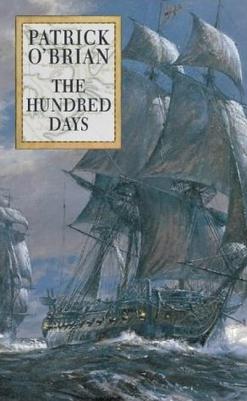
The Hundred Days is the nineteenth historical novel in the Aubrey-Maturin series by British author Patrick O'Brian, first published in 1998. The story is set during the Napoleonic Wars, specifically in their last portion in 1815, the Hundred Days.
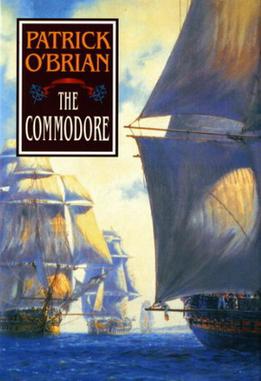
The Commodore is the seventeenth historical novel in the Aubrey-Maturin series by British author Patrick O'Brian, first published in 1995. The story is set during the Napoleonic Wars and the War of 1812.

The Wine-Dark Sea is the sixteenth historical novel in the Aubrey-Maturin series by British author Patrick O'Brian, first published in 1993. The story is set during the Napoleonic Wars and the War of 1812.

Clarissa Oakes is the fifteenth historical novel in the Aubrey-Maturin series by British author Patrick O'Brian, first published in 1992. The story is set during the Napoleonic Wars and the War of 1812.

In the rating system of the Royal Navy used to categorise sailing warships, a sixth-rate was the designation for small warships mounting between 20 and 28 carriage-mounted guns on a single deck, sometimes with smaller guns on the upper works and sometimes without. It thus encompassed ships with up to 30 guns in all. In the first half of the 18th century the main battery guns were 6-pounders, but by mid-century these were supplanted by 9-pounders. 28-gun sixth rates were classed as frigates, those smaller as 'post ships', indicating that they were still commanded by a full ('post') captain, as opposed to sloops of 18 guns and less under commanders.
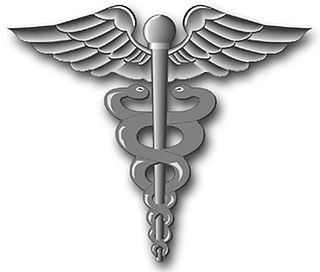
A hospital corpsman is an enlisted medical specialist of the United States Navy, who may also serve in a U.S. Marine Corps unit. The corresponding rating within the United States Coast Guard is health services technician (HS).

Sir William Beatty was an Irish surgeon who served in the Royal Navy. Born in Derry, Ireland, he joined as a surgeon's mate in 1791 at the age of 18. He is best known as the ship's surgeon aboard HMS Victory during the Battle of Trafalgar, at which he witnessed the death of Admiral Horatio Nelson, and for writing an account of that battle – Authentic Narrative of the Death of Lord Nelson.
Seafaring is a tradition that encompasses a variety of professions and ranks. Each of these roles carries unique responsibilities that are integral to the successful operation of a seafaring vessel. A ship's crew can generally be divided into four main categories: the deck department, the engineering department, the steward's department, and other. The reasoning behind this is that a ship's bridge, filled with sophisticated navigational equipment, requires skills differing from those used on deck operations – such as berthing, cargo and/or military devices – which in turn requires skills different from those used in a ship's engine room and propulsion, and so on.
Loblolly boy is the informal name given to the assistants to a ship's surgeon aboard British and American warships during the Age of Sail. The name derives from a porridge traditionally served to sick or injured crew members.
This is a list of recurring characters in the Aubrey–Maturin series of novels by Patrick O'Brian. As is noted in the articles about each novel, some of these characters are based on real historical persons, while others are purely fictional. Because there is an article describing each novel, links are made to those articles when mentioning the stories in which each character appears. References to page numbers, where they appear, are based upon the W. W. Norton & Company printing of the novels.

The master, or sailing master, is a historical rank for a naval officer trained in and responsible for the navigation of a sailing vessel. The rank can be equated to a professional seaman and specialist in navigation, rather than as a military commander.
A surgeon's mate was a rank in the Royal Navy for a medically trained assistant to the ship's surgeon. The rank was renamed assistant surgeon in 1805, and was considered equivalent to the rank of master's mate/mate. In 1807, first-rate would have three, a third-rate two, and frigates and sloops one.















